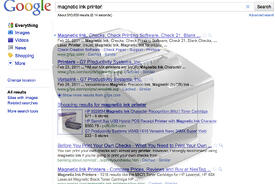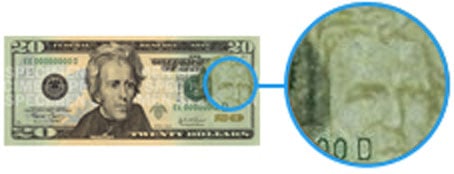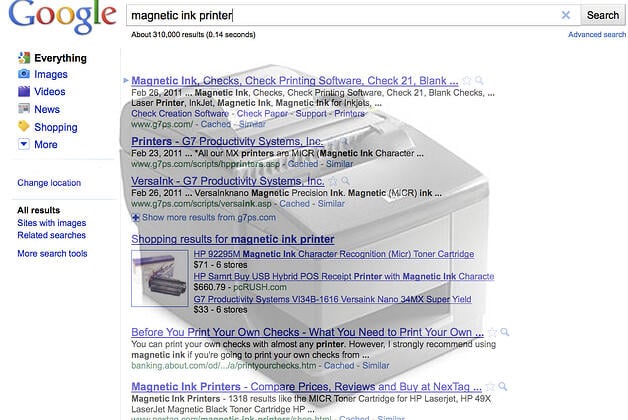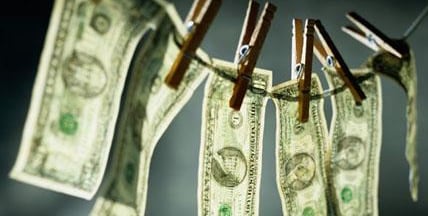(Note: This is the second article in our series Best Practices for Counterfeit Detection. For the introduction, please read Part I)
Counterfeit money remains a perennial problem for retailers of all stripes. Yet, while the problem itself is daunting enough, the solutions can be equally challenging to comprehend. As we mentioned in our previous post, the best methods of detecting counterfeits is to minimize (or in some cases completely eliminate) the human factor and scan money with machines – but even among the mechanical solutions there is a great deal of diversity.
A short roundup of the commonly-used methods: There are machines which test for the presence of magnetic ink, which all genuine dollars have. There are bright lamps designed to illuminate the hidden watermarks on genuine currency. There are also ultraviolet light lamps that illuminate embedded security threads and infra-red viewers that allow users to view the IR

printed patterns. And lastly, there are the multi-test machines, the ultimate in counterfeit detection technology, which use a variety of tests (including some combination of the above) to test the bills for authenticity.
We will cover the UV lights, infra-red viewers and multi-test units in the next post, and cover only magnetic-ink testers and watermark lamps here.
Magnetic Ink Testers
As the name suggests, these counterfeit detectors look only at the traces of iron particles in the ink characters printed on US banknotes. The magnetism they create is the criteria by which they judge dollars (and sometimes foreign currencies) to be genuine or counterfeit.
Magnetic-ink testers vary greatly, from hand-held devices that the user “rubs” on the bill and which emit a tone or an alarm when it detects the presence of magnetic ink, to higher-end mechanical devices that pull the bill through and provide the user with a red or green light. In either event, the use of these devices gives the user a false sense of security, because they are capable of catching only the most basic “amateur” counterfeit bills.
How easy is it to circumvent a magnetic ink tester? Go to Google and search for “magnetic ink printers”; you will see prominently displayed all the equipment needed to fool these devices. Since the magnetic detector machines only give a “yes/no” response, they have no way of confirming that the magnetic ink is printed accurately or that it contains the characters and patterns of genuine currency.
There is one other common problem with these machines: they test for a feature that is not always stable across all bills. The magnetic properties of the bills tend to degrade with age, and in particular on worn bills. Thus, the magnetic-ink testers tend to give many false positives for counterfeits when in reality the bills are just old and heavily used.
Watermark Lamps
Some machines are designed to enhance a user’s ability to view the more hidden features printed in the banknote. This is the case with watermark lamps: they achieve this through the process of back-lighting the bill, so the watermark is illuminated more clearly.

At first, this seems a reasonable concept – just put the bill up to the lamp and instantly see the watermark that confirms it is authentic. However, in practice, this type of test presents some real potential problems. Most of the US dollar notes contain a watermark “ghost image” of the US historic figure featured on the front of the bill. To validate the watermark, one is supposed to compare the image of the watermark to the portrait and confirm that they are identical. However, many counterfeiters these days do make an effort to replicate these watermarks. Or, as we also discussed in the preceding post, they simply “wash” the ink off the lower-denomination notes and reprint higher denomination bills onto them. In both of these cases then, your cashier is put into the uncomfortable situation of needing to be somewhat of a watermark expert. How can they know that the watermark they see is, in fact, correct? Is this type of subjective decision making that you want to put into the hands of your hourly employees?
Counterfeit Detection Done Right
As you can see, for all their benefits, both the magnetic-ink testers and the watermark lamps have some rather glaring weaknesses. Fortunately, in our next post we will cover a couple of very usable solutions– UV lights and multi-test intelligent scanners – which are much more effective and have fewer weaknesses for fraudsters to exploit.



Leave a Comment